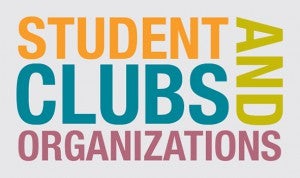Module 4: College Resources (Part 2)
The College Community
Introduction
Objective: The student will describe at least 2 key sub-communities in the college he or she plans to attend.
This lesson is designed to help you find out about campus resources and supports that are available in your college community. In Module 2 Lesson 1, you pinpointed some goals that you would like to achieve in college, and you’ve begun to think about how you will work toward those goals. However, you may not be sure exactly how to achieve some of those goals because you don’t yet know what resources and supports will be available in college. In this lesson you’ll have the opportunity to explore some of those resources and supports.
Estimated time 30—45 minutes.
Materials needed:
- Goal Setting worksheet from Module 2 Part 1
- Internet access
Curriculum Link:
This section corresponds with Module 4 Lesson 2 in the College Bound Transition curriculum resources.
Learn About It
Review your goals from the Goal Setting worksheet from Module 2 Part 1.
- What goals did you set for yourself?
- For each goal, brainstorm a few possible steps you would need to take to reach the goal.
Campus Resources
- College campuses have a wide range of support and resources for students. The resources and procedures you must follow to access them are very different in college from those in high school, and also vary from college to college.
- It is your responsibility—and nobody else’s—to know which resources you need, to find out how to access them, and to take the initiative to use those resources without someone telling you to do so.
At this point, we’ll explore some of the components of a campus community that you may want to include in your search. This is by no means an all-inclusive list, so feel free to add your own resources to the list.
College students with disabilities have said that in elementary, middle, and high school they experienced stigma attached to having a disability. In the public school system, you did not have control over who knew about your disability. College is different from high school because you will use your discretion as to whom you will tell about personal disabilities.
Accessing Campus Resources

- Locating and accessing campus resources can be overwhelming for first-year college students, especially at larger universities.
- Exploring available resources and creating a directory of the ones you will need to meet your goals before arriving on campus makes it easier to find the support you need when you need it.
- At this point, we’ll explore some of the components of a campus community that you may want to include in your search. This is by no means an all‐inclusive list, so feel free to add your own resources to the list.
Parents Chime In
Locating and accessing campus resources can be overwhelming. In addition, many students tend to wait until they need a particular support or service before beginning to investigate the available resources. The additional time constraints and stress may make it less likely that the student will find the appropriate resource when it is needed. Discuss with your student the importance of knowing how to access resources and support services before they are needed.
Take some time with your student to explore the college community and resources available on the campus he or she plans to attend. By exploring the school’s website and publications, your student can compile a directory of opportunities and contact information that is specific to the student’s own needs and interests.
Campus Community Components
Watch this video to learn more about what a “living learning community” looks like at Virginia Tech University.
Campus Community (the college’s “vibe”): Sometimes you know when you’ve found the right college because you just feel comfortable there immediately. It’s important to visit the campus to get a feel for the campus environment and whether or not it’s a good fit for you. If a visit isn’t possible, you can do other things such as read the mission statement, talk to current students, alumni, or faculty, and look at the clubs and organizations offered.
These are the components of a campus community that we’ll explore:
- On-Campus Living
- Academic Departments
- Academic Support
- Athletics
- Student Organizations
- Personal Enrichment
- Family
On-Campus Living Community
Living Learning Communities on campus
- A large part of many students’ first-year college experiences revolves around the residence hall.
- In order to help facilitate a positive adjustment and experience, many resources will be available for students through the college’s campus living department.
- This department may also be called Campus Living, University Housing, Residence Life, or something similar.
Areas to investigate: Programming and events that are offered, the different types of staff members and what their roles are, the rules, regulations, and procedures that govern the residence halls, and any additional services offered by the department.
Academic Department Community
Many of your goals over the course of your college career will naturally fall under the academic heading. Because academics will be such a large part of your college experience, several different areas fall under the broad idea of academic communities. The first one is your academic department.
Making contact early with faculty and staff in the department of your intended major is worthwhile for several reasons:
- It helps you to feel more connected and involved with your professors, which in turn often helps your motivation and performance in classes.
- It gives you an inside track on opportunities that arise within the major, such as scholarships and internships.
- It may give you the opportunity to develop a mentoring relationship with a faculty member.
- Getting to know the students in your major is beneficial. Chances are that you will encounter some of the same students in multiple classes because they will have the same academic requirements to fulfill. It’s helpful to collaborate with these people. Depending on your major and future career field, you may actually be working with some of your future colleagues.
- Many majors have student organizations such as clubs or honor societies where students can get involved and interact with both peers and faculty. These organizations often offer professional development and service opportunities, and may even offer scholarship and networking opportunities. At the very least, they look good on a resume! Another benefit of these organizations is that they provide an opportunity to get involved and even to assume leadership roles but don’t require nearly as great a time commitment as other clubs and organizations. They also do double duty as a social connection and an academic-focused activity.
Areas to investigate: The college and department for your intended major; faculty and their area of specialization; major-related organizations, facilities, and upcoming events.
Academic Support Community
Each college will offer different academic supports, but several are common to almost all colleges and universities.
- Office of Disability Support Services: Any state supported college, and most others, will have an office of disability support services to provide accommodations and support to students with disabilities. At some schools, providing accommodations is all this office does. At others, a wide range of services will be available.
- Tutoring centers: Most schools also have some kind of tutoring center. Some may have one office for all types of tutoring, while others may have specialized offices (e.g., a Math Lab, Writing Center, Science Center). Each academic department may have its own specific tutoring resources. Be sure to look into all of the different kinds of tutoring available at your school.
- Study groups (both university-organized and informal groups).
Areas to investigate: Services; locations; staff; policies and procedures; hours of operation.
Athletic Community
Check out this video to see what an Athletic Living Learning Community is like in college.

At many universities, athletics are a big part of the culture. Thus, many students are likely to have goals related to athletics, which can be anything from winning an intramural championship to visiting the gym to avoid the freshman 15.
- University teams: When talking about university athletics, the first thing that comes to mind may be the official university teams. Obviously, not every student will be playing on a school team, but anyone can get involved by being a fan.
- Intramural or club sports: If you love to play a sport but won’t be participating on the official school team, many colleges offer club sports and/or intramurals for students with varying levels of skill and competitiveness.
- Fitness facilities: If organized sports aren’t your preference, you can check out the fitness facilities your college offers. Most schools have a variety of options that will help you to stay fit in a way that’s also fun. You may be able to find information about different types of equipment, classes that are offered, and other fitness resources on your college’s website.
Boosters/Athletic support organizations: Finally, even people who aren’t particularly athletically inclined can get involved with college athletics by joining an athletic support organization or just showing up to events and cheering on the team.
Areas to investigate: Sports offered at a school you would like to attend (including university, club, and intramural teams); schedules; tryouts; policies; staff; events; classes.
Student Organization Community
Depending on the size of a college’s campus, student organizations can cover a huge range of possibilities. Going into freshman year with an idea of the opportunities that are available at your college and a plan for one or two organizations to try out during your first year is a good way to get involved without becoming overwhelmed by the possibilities.
- Student government: Colleges generally have student government positions similar to those you may be familiar with in high school, and many also have additional opportunities for involvement such as residence hall government.
- Student media: Student media may include the student newspaper, radio, yearbook, and other publications such as poetry or short story anthologies, graphic arts publications, etc.
- Interest groups: This broad category encompasses any kind of interest that students may share. Some examples could include a political party group, an animal rights organization, a skydiving club, or a community service chapter. At many colleges, if there isn’t already a group for your interest, you may be able to create one.
- Faith-based organizations: Religious or spiritual organizations often exist for a wide variety of faiths and belief systems. Many of these also have connections with houses of worship in the local community in order to help their college members find resources for following their beliefs off‐campus as well as on‐campus.
- Greek life: Greek life refers to fraternities and sororities. Colleges vary greatly in their emphasis on Greek life. At some schools, only a very small proportion of the student body joins these organizations, while at other schools, much of the social activity is centered around them. Learning about these options before your freshman year can help make the process easier if you plan to rush. But, many people advise waiting until your sophomore year to do so.
- Other Campus Organizations
Areas to investigate: Lists of organizations; meeting schedules; names and contact information for officers or advisors.

Source: https://www.cuny.edu/current-students/student-affairs/student-life/
Enrichment Community

Many colleges have a rich array of plays, musicals, concerts, art exhibits, dance performances, and much more that occur regularly during the school year. Students interested in performing can often get involved regardless of whether they are majoring in the fine arts. Students who don’t want to participate but do want to attend these events usually have many options from which to choose:
- Theater
- Music
- Art
- Dance
Areas to investigate: Event and performance schedules; audition schedules; performance hall and gallery locations; contact information.
Family Community
Although family members are not physically present on campus, they continue to be part of your college community.
- Many colleges offer resources specifically for parents and other family members, such as parent associations and online networks, and events like parents’ weekend and family orientations. To help your family make a smooth transition along with you, you can locate information about these resources and relay it to your family.
- Most colleges make it easy for you to stay in touch with your family by providing a multitude of communication options. Now is the time for you to open a dialogue with your parents about maintaining your family community while you’re at college. You and your family can begin to discuss expectations for how often each of you will communicate and the ways in which you’ll keep in touch.
Areas to investigate: Family or parent associations; Family or parent events (e.g., Parents’ Weekend, Family Orientation); communication options and preferences (e.g., email, text, phone, mail, instant messaging)
Source: https://www.today.com/parents/how-deal-when-child-heads-college-parents-survival-guide-t46681
Parents Chime In
- As your student starts college, it will be a huge transition for both of you. Start talking about how you and your child will communicate with each other and your expectations for how often you will communicate.
- Attend orientation with your student and take advantage of the many informative sessions offered. This experience will give you a chance to get a small glimpse of your child’s college life.
- Attend parent weekends and events (with your student’s permission, of course!)
Goal Setting Worksheet
Using the Goal Setting worksheet that you started in Module 2 Part 1:
- In the “Plan” column of your worksheet, identify the steps you will need to take to accomplish each goal.
- In the “Resources” column of your worksheet, identify the campus resources you will need to access to complete those steps. If you are not sure whether a resource is offered at the college you plan to attend, list it here anyway. In the next activity, you can explore the specific resources offered at the college you plan to attend, and can modify your choices if necessary.
Objective Check
Have you accomplished today’s objective?
Objective: The student will describe at least 2 key sub-communities in the college he or she plans to attend.
If so, congratulations!
If not, review each campus community component with your parent or an older sibling who has attended college. Working together, revise the “Plans” and “Resources” sections of your Goal Setting worksheet.
Digging Deeper
- If you have attended orientation, review the information that you received about the different campus communities.
- Go to the website of the college that you plan to attend and research the topics listed under “areas to investigate” in each of the campus communities discussed in this module.
